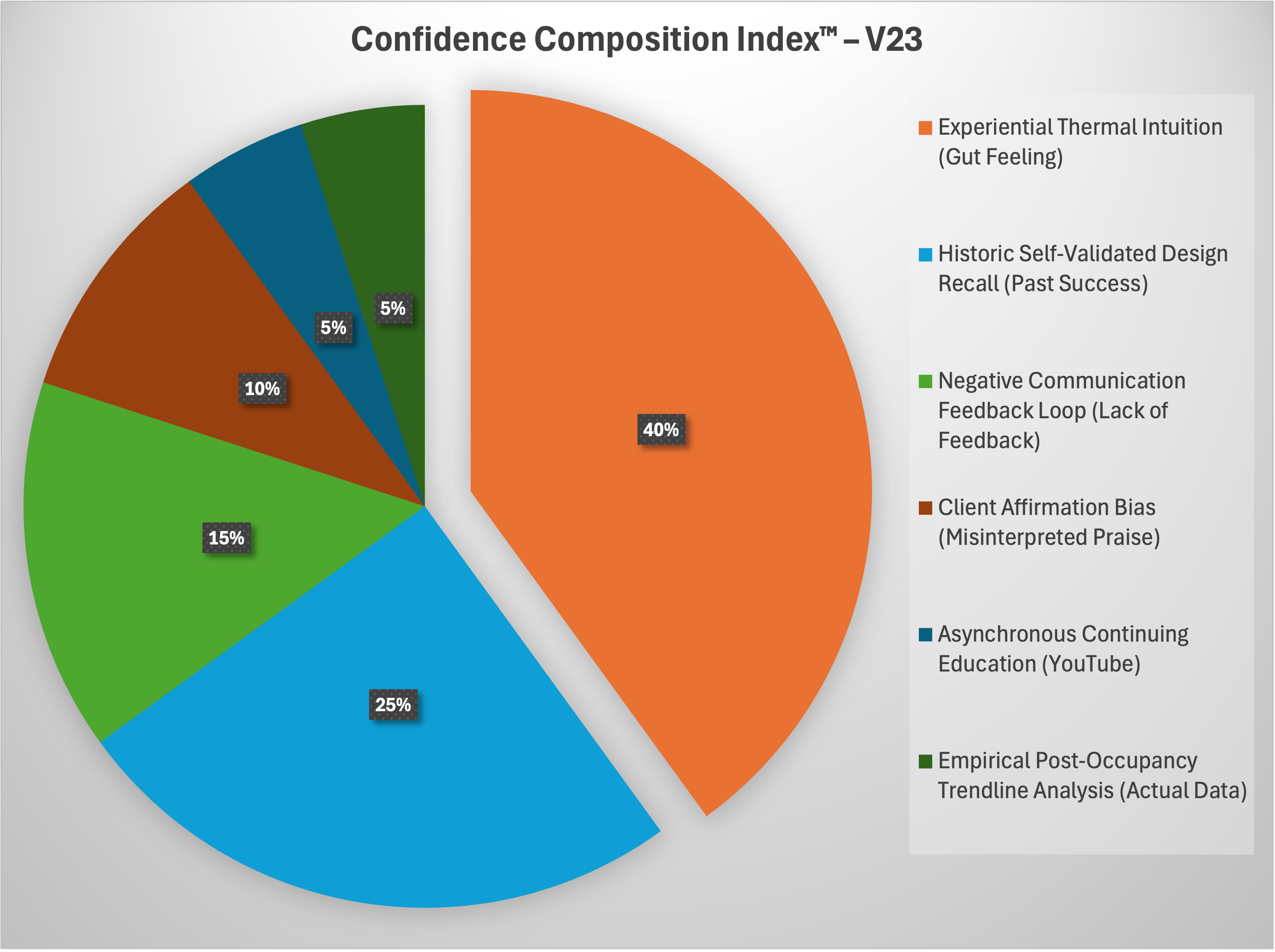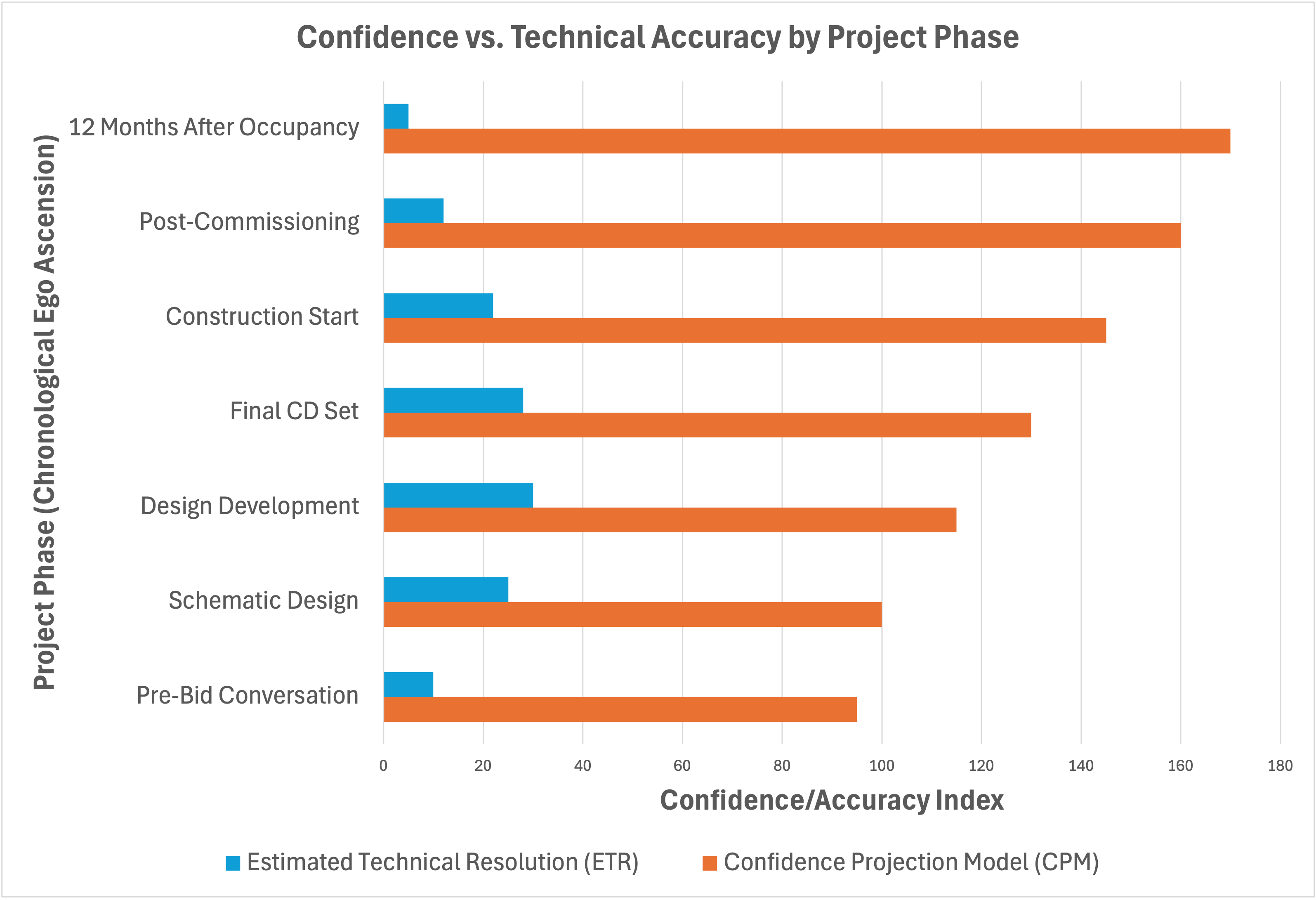
Humility? Not on My Watch.
by Lance Thermwell, P.E. (Pending) | April 29, 2025, 7 a.m.
I’ve been told by a few peers (haters) that I should approach my projects with a bit more humility.
Interesting take.
You don’t become the most prolific GSHP designer in the tri-state area by second-guessing yourself. You do it by walking into a design review with confidence, coffee, and the same loopfield layout you’ve been using since Bush was in office.
In this business, there are two kinds of engineers: the ones who ask questions—and the ones who make statements. I’ve never been much for questions. Not when I’ve got instincts like these.
The Gut Method™️
Most designers start with site analysis—core samples, load profiles, historical weather data. I find that exhausting. What I do is drive up to the site, roll down my window, and listen to the ground.
It hums to me.
Some say it’s the wind. I say it’s the Earth’s feedback loop.
I once sized an entire loopfield during a layover at O’Hare. No laptop, no drawings—just a bar napkin and a gut feeling that this one was going to be deep. Eighteen vertical bores later, the client said, and I quote: “It’s not working quite right, but the manifold looks amazing.”
Of course it did. I always make the parts they can actually see look great. You can’t buy that kind of validation.
To really understand my process, it helps to visualize where my confidence comes from. Here’s my proprietary model:

As you can see, it’s a carefully balanced mix of gut instinct, selective memory, and complete indifference to reality.
Collaboration (Optional)
I tried collaboration once. The architect wanted “visual consistency.” The MEP wanted “load-balanced control zones.” The commissioning agent asked for “clear documentation.”
You ever tried to sketch out a hydronic loop on the back of a business card while three people complain there’s no legend? That’s when I knew: some visions are too pure for groupthink.
So now I work alone.
I call it the Just Me™ workflow: I design in isolation, send the drawings out at 11:59 p.m. the night before submission, and silence my phone for 72 hours. That’s when the real problem-solving begins—on their end.
And if they don’t like it? Hey. It’s called design-build for a reason.
Build it. And maybe I’ll redesign it. But probably not.
Monitoring Is For People Who Stick Around
These days, everyone wants “data.” Real-time tracking. Performance dashboards. I say: if you need numbers to tell you whether your system’s working, you probably didn’t build a system worth trusting in the first place.
I prefer the Analog Feedback Loop: if no one calls, the system works. If they do call? That’s a teachable moment. For them.
I once designed a system for a private boarding school. Two weeks in, they called to say it was stuck in cooling mode. I said, “That’s just thermal inertia. Give it time.”
Three months later, the headmaster emailed me in all caps. I flagged it as spam.
You know what no one’s ever asked me to do?
Come back.
And that’s how it should be. I hand off my work like a flaming baton and walk away. No commissioning meetings. No post-mortems. No checking in.
Because when problems show up, they don’t trace the mistake back to me.
They blame the operators. They blame the controls.
They blame each other.
And I’m already three towns over, drinking hotel coffee and drawing rectangles in CAD that will soon be mistaken for brilliance.
The Job That Made Me a Legend
Let me tell you about the Birchfield Civic Center project. Brand-new build—community space, gymnasium, classic political photo-op kind of deal. They brought me in because the previous engineer had “concerns about geothermal feasibility.”
Amateur stuff.
I didn’t respond to the RFP until two days before it closed. I like to build suspense. Makes people appreciate you more when you finally show up. The architect called me in a panic: “Are you still submitting?”
I said, “I’m thinking about it.”
He begged. Actually begged! Said I was their last hope.
So I pulled a three-hour design sprint between dinner and a bar tab. Took my old YMCA design, changed the title block, mirrored the building footprint to make it feel fresh, and slapped in a note that said: “Field conditions may vary.” My legal forcefield.
Dropped it in five minutes before the portal closed.
Next morning: four missed calls and an email with the subject line:
THANK YOU. YOU’RE A LIFESAVER.
They never asked for changes.
They never do.
Six months later, I heard the system was short-cycling, loop temps spiking, sensors going rogue. Bad building operators. Wrong settings. Happens all the time.
Meanwhile, I was already booked on a different project across the state.
Even tighter deadline. Even less information.
They never called me.
Why would they?
I delivered.
That’s what people forget—if you give them a miracle, they forgive the smoke.
They Still Call Me a Genius
A contractor once told me, “Your drawings are vague, chaotic, and barely coordinate with the architectural.”
I said, “Thank you.”
He didn’t get it.
That’s the genius.
Vagueness is freedom. Chaos is flexibility. I once left an entire controls sequence blank—just a box with the word TBD. The controls guy looked at me like I’d lost my mind.
I said, “This is an opportunity for you to rise to the challenge.”
He didn’t.
But the building heated.
Oversized backup boilers are a mainstay.
So easy. So effective.
And that’s what matters.
Over the years, my confidence has only grown—especially as technical accuracy becomes less and less of a concern. I had someone chart it once:

As expected, confidence increases steadily across all project phases, completely independent of actual system performance. The widening gap is a positive sign—it shows the designer is evolving into a true leadership figure, detached from technical limitations.
If that’s not leadership, I don’t know what is.
Final Thoughts from a Survivor
People say this work requires precision. I say it requires presence.
Not actual presence—just the illusion of it.
You show up once, shake some hands, drop off a binder no one reads, and disappear.
The less they see you, the more they believe in you.
Humility? That’ll get you stuck on-site answering questions.
I’ve got a submittal due yesterday and a hard drive full of recycled designs that mostly work.
Clients trust me because I give them something no data ever can: relief.
Relief that someone showed up. That someone had a plan. That someone else is probably at fault.
And when the alarms start blinking, and the VFDs start humming out of tune, they won’t call me.
They’ll call the controls contractor. The facilities guy. Each other.
Me?
I’m already gone.
About the Author
Lance Thermwell, P.E. (Pending)
Founder, Thermwell Dynamics
Motto: “Design bold. Disappear early.”
Fun Fact: Once specified a pump curve from memory. It was “close enough.” Close enough is good enough.